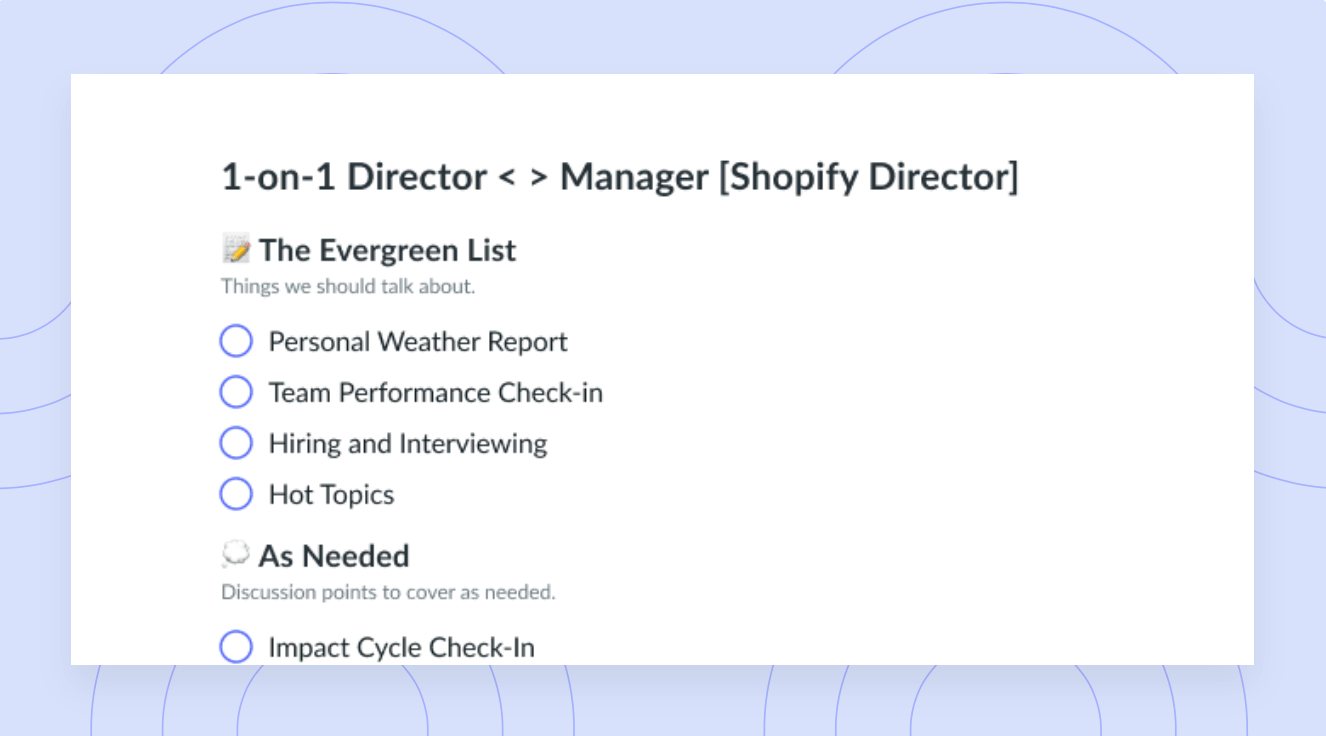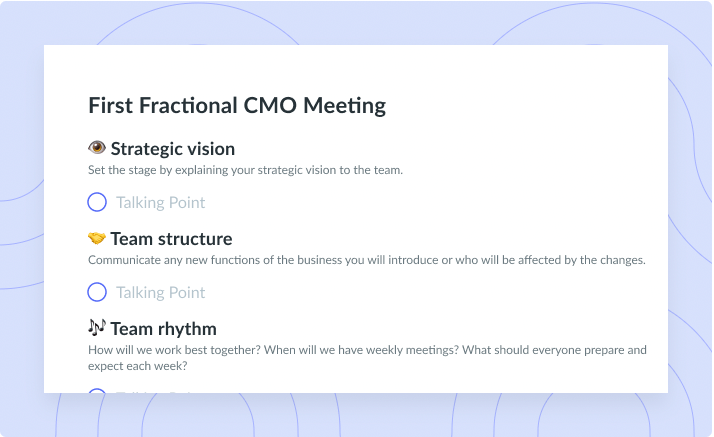Differences Between CEOs & Other C-Level Executives
See how CEOs compare to other executives, including founders, presidents, vice presidents, owners, chief operating officers, and more!
For an organization to be successful, it needs to employ a roster of exceptional leadership talent. While the chief executive officer (CEO) is the highest-ranking employee within any organization, there are additional crucial roles that must work in tandem with the CEO to run an effective business. Additional roles include a company owner, a founder, a president and vice president, a chief operating officer (COO), a chief of staff, and a chair of the board (COB). Collectively, the leadership team must support employees, delegate tasks, set business objectives and key results (OKRs), develop strategies to achieve business OKRs, build and maintain relationships with clients, and manage and guarantee client satisfaction.
- What is a CEO?
- What are C-level executives?
- CEO roles and responsibilities
- Differences between CEO and other leadership titles
- What position is higher than a CEO?
What is a CEO?
A CEO or chief executive officer is the highest-ranking member of an organization. Often responsible for managing and directing the company towards primary goals and objectives, CEOs are also responsible for leading a team of executives, overseeing employment decisions at the executive level, and making major decisions including acquisitions, mergers, joint ventures, or large-scale expansions.
What are C-level executives?
C-level or C-suite executives are terms used to describe high-ranking executives within an organization. C-level executives hold the highest management positives within an organization and are typically the heads of their particular areas or departments. C-level or C-suite executives are referred to as such as the job titles at this level usually begin with the letter “C,” like “CEO” or “COO.”

Run efficient meetings, come to a decision, and get back to work
Level up your meeting habits to boost engagement and productivity with a collaborative meeting agenda. Try a tool like Fellow!

CEO roles and responsibilities
- Track company performance
- Implement changes
- Oversee the strategic direction
- Be accountable to the board of directors
- Represent the company
1Track company performance
CEOs are largely responsible for tracking a company’s performance—or more specifically, the organization’s financial performance. CEOs may rely on financial or non-financial metrics to draw conclusions and track progress. To track company performance efficiently, COOs will often call on their direct reports or employees to present the facts. This enables the CEO to gather a quick consensus on how each aspect of the business is performing and what course of action should be taken moving forward.
2Implement changes
CEOs need to be exceptional visionaries who aren’t afraid to go against the grain and make changes when necessary. After crafting a long-term decision, CEOs will usually gather their leadership team in an attempt to create an action plan that will spark positive change. While changes are often implanted at the ground level by operational managers or individual contributors, the CEO is responsible for crafting the long-term plan that will be used as a framework for the rest of the organization.
3Oversee the strategic direction
CEOs must be able to make informed decisions that shape the future of the organization based on company metrics and performance. While lower-level managers are often responsible for overseeing or planning day-to-day operations, CEOs need to shape these actions with a strategic long-term plan. CEOs should not be short-sighted and should instead lay the groundwork for a successful future that will be sustained by the organization.
4Be accountable to the board of directors
A board of directors (BOD) is responsible for overseeing the entire company’s performance and holding the CEO accountable. Despite the CEO holding the most senior position in the organization, they still need to be accountable to the board. Ultimately, the BOD needs to operate with the good of the organization in mind, which is why the CEO delivers updates on strategic plans and gets frequent feedback regarding the direction of the company from the BOD.
5Represent the company
A CEO is the face of a company, both internally and externally. This means that employees within the organization and consumers or the media alike will look to the CEO to represent the organization. Some of the CEO’s outward-facing responsibilities include speaking at conferences, addressing the public on public forums, and participating in community events, for example.
Differences between CEO and other leadership titles
- CEO vs. founder
- CEO vs. president
- CEO vs. vice president
- CEO vs. owner
- CEO vs. chief operating officer
- CEO vs. chair of the board
- CEO vs. chief of staff
1CEO vs. founder
People often confuse the CEO of a company with the founder. While the founder may presently hold the title of CEO, there are numerous occasions in which each role is held by different individuals. When determining the core differentiator between the two, remember that the founder of the company is the individual who started the company, which doesn’t necessarily mean they are still involved in a leadership capacity. If a CEO was also responsible for founding the company, they may be referred to as both the CEO and the founder interchangeably.
2CEO vs. president
The CEO is the highest-ranking executive within an organization, while the president is usually second in command behind the CEO. While the CEO is usually responsible for being the lead decision maker within an organization, this responsibility is often shared with the president. In some scenarios, the second-highest-ranking executive within an organization is the COO; however, this title is occasionally used interchangeably with that of the president. Some organizations will also choose to hire two separate individuals for the roles of COO and president.
3CEO vs. vice president
While the vice president of the company is one of the top executives within an organization, there are a number of roles that hold higher power. If a company has both a CEO and a president, the vice president would be third in command. The CEO ranks higher than both the president and vice president and is often responsible for making major corporate decisions, being the main liaison between the board of directors and corporate operations, and being the public face of the company.
4CEO vs. owner
An owner is an individual with a financial stake in the company, either owning the company as a whole or holding some type of equity in the business. As an owner, this individual would be entitled to the organization’s profits or a cut of the profits if ownership is distributed among multiple individuals. In some scenarios, the CEO of the company may also be the owner or part owner.
5CEO vs. chief operating officer
A chief operating officer is one of the highest-ranking roles in an organization and acts as part of the C-suite. Typically the second-highest-ranking executive in an organization behind the CEO, COOs are often responsible for day-to-day operations as well as executing on long-term goals. On any given day, COOs are responsible for implementing policies to promote an organization’s culture and vision while simultaneously overseeing daily operations that help keep the business on track. COOs are also responsible for spearheading human resources, recruitment, legal, payroll, and employee training.
6CEO vs. chair of the board
The CEO is responsible for directing the operational aspects of a company, whereas the chair of the board (COB) oversees the company as a whole. While the chair of the board doesn’t have the power to single-handedly overrule decisions made by the CEO, the board as a collective does have the power to do so. In some scenarios, the roles of CEO and COB are both held by the same person; however, most organizations prefer to make two separate hires to uphold the integrity of the organization.
7CEO vs. chief of staff
The chief of staff is a role that aims to support the CEO. While CEOs are responsible for overseeing daily operations and directing the operational aspects of a business, the chief of staff instead focuses on assisting the CEO directly by planning meetings and determining the needs of the business. The role of a chief of staff is often described as a combination of the responsibilities of a COO with those of an executive assistant (EA).
What position is higher than a CEO?
While there is technically no internal role that ranks higher than a CEO, a chairman or chairperson does hold power over a CEO as they can appoint, evaluate, and fire the CEO. While the CEO holds the highest-ranked position in the operational structure of the organization, they still need to remain accountable to the chairman or chairperson. All internal executives report to the CEO, while all board members will report to the chairman or chairperson. Both roles must work in tandem for the greater good of the organization.
CEO versus other chief executives
Navigating business jargon can be incredibly difficult. Luckily, we’ve taken the time to break down all the C-level leadership titles so you can get the answers you’re looking for with ease. Don’t forget to follow along on the Fellow Blog for more management and leadership content!









![1-on-1 between CEO and Executive [Lobbyist Association] Template](https://fellow.app/wp-content/uploads/2021/09/1-on-1-between-CEO-and-Executive-Lobbyist-Association-preview.png)


















